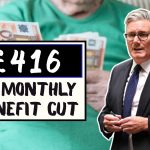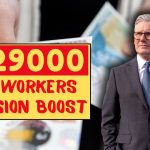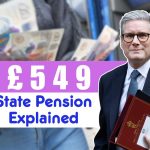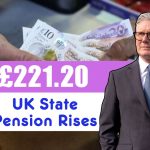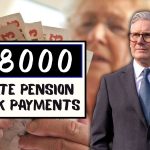The UK government has officially confirmed a £200 cost-of-living payment for eligible residents, set to be distributed in October 2025. Designed to support households struggling with rising expenses, the payment will help with energy bills, groceries, and other household essentials.
With inflation continuing to squeeze families and seniors, this one-time payment comes as a welcome relief. Here’s everything you need to know about who qualifies, how payments will be made, and what steps you should take.
Who Is Eligible for the £200 Payment?
Eligibility for the cost-of-living payment is based on income levels and existing benefit entitlements. Residents who receive Universal Credit, Pension Credit, or other qualifying benefits will automatically be included.
The government has emphasized that this payment is targeted support, focusing on households most in need. Families with children, pensioners on fixed incomes, and individuals already struggling with high living costs are expected to benefit the most.
For absolute clarity, residents should check eligibility criteria on the official GOV.UK website, as local variations may apply.
How Will the Payment Be Distributed?
The distribution process is designed to be simple and efficient. Most eligible individuals will see the £200 automatically added to their bank accounts linked to existing benefits.
For those not receiving qualifying benefits directly, the government has outlined an application system. In such cases, residents may need to provide documentation, including:
- Proof of income
- Proof of residency
- Details of household circumstances
The majority of payments will be processed through secure banking channels, ensuring funds arrive quickly and safely.
Timeline: When Will the £200 Be Paid?
The government has confirmed that payments will begin in October 2025.
While exact dates for deposits may vary, most households should expect to see the payment in their bank accounts within weeks of rollout. Notifications will be issued by the Department for Work and Pensions (DWP) and HM Revenue & Customs (HMRC) via:
- Official letters
- Benefit statements
Recipients are advised to monitor their accounts closely and contact DWP if payments do not appear by late October.
Why This Payment Matters in 2025
The primary goal of the £200 payment is to ease financial strain during a period of high inflation. Costs for food, utilities, and transportation have surged, leaving vulnerable households with tough choices between essentials.
By providing a lump sum, the government aims to reduce short-term stress and help people manage rising costs without cutting back on basic needs.
Financial experts note that while the £200 is not a permanent solution, it offers a timely safety net for households under pressure.
Impact on Households Across the UK
For many families, £200 can make a critical difference. It could mean:
- Covering a full month’s worth of groceries
- Paying part of a heating bill as winter begins
- Helping with school-related expenses or debt repayment
While it won’t erase financial struggles completely, it acts as a bridge of support, especially for those living paycheck to paycheck.
Advisers recommend using the payment to cover essential bills first, such as rent, utilities, or food.
How to Apply if You’re Not Automatically Eligible
Residents not already receiving qualifying benefits but who believe they should be eligible must apply separately.
Steps include:
- Visit your local council website or the official GOV.UK portal.
- Complete the online form or submit a paper application.
- Provide required documents (proof of income, residency, and ID).
- Submit before the deadline to avoid missing the October rollout.
Applications are typically processed within a few weeks, ensuring successful applicants receive their funds promptly.
Additional Support Beyond the £200 Payment
The £200 payment is part of a broader package of cost-of-living support. Other options available in 2025 include:
- Energy Bill Rebates – direct discounts on household energy costs
- Council Assistance Schemes – local authorities providing tailored financial help
- Winter Fuel Payments – for pensioners struggling with heating bills
- Targeted Grants – for low-income households, disabled residents, and families with children
By combining these programs, households can strengthen their financial resilience during difficult times.
Protect Yourself Against Scams
Whenever government payments are announced, fraudsters often exploit confusion. Remember:
- The government will never ask for payment or bank details by email or text.
- Applications should only be made via official GOV.UK channels.
- If in doubt, contact the DWP directly to confirm legitimacy.
Planning Ahead for the Payment
Experts advise families to plan the £200 strategically:
- Prioritise essentials like heating, rent, and groceries.
- Use part of it to reduce high-interest debt if possible.
- Consider setting aside a small portion for emergencies.
Even a modest one-time payment can provide stability and breathing space when used wisely.
Looking Beyond October 2025
The £200 payment is just one part of the government’s broader approach to addressing the cost-of-living crisis. Policymakers continue to evaluate further support measures, including:
- Expanding Pension Credit eligibility
- Increasing targeted grants for families
- Reviewing energy rebate programs for winter 2026
Staying informed by following government announcements is the best way for residents to ensure they don’t miss future opportunities.
Frequently Asked Questions (FAQs)
Q1. Who qualifies for the £200 cost-of-living payment?
Residents receiving Universal Credit, Pension Credit, or other qualifying benefits will automatically be eligible. Others may apply if they meet income thresholds.
Q2. Do I need to apply for the payment?
Most people won’t need to apply—it will be automatic for benefit recipients. Only those outside direct benefit programs may need to submit applications.
Q3. When will the payment arrive?
Payments begin in October 2025, with most processed within that month.
Q4. Is the £200 payment taxable?
No, the payment is tax-free and does not need to be declared on tax returns.
Q5. Can the payment be backdated if I miss it?
No, the payment is designed for October 2025 only and will not be backdated.






